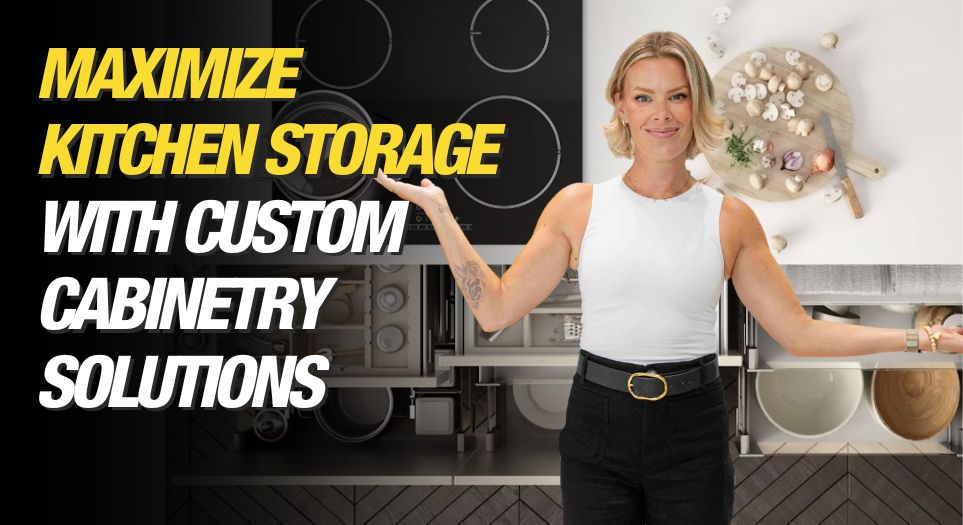If you’ve watched my shows, you know how many surprises we uncover behind the walls. One of the biggest waterproofing mistakes we see on our shows is partial waterproofing. It’s...

Remodelling Your Home for Accessibility and Aging
By Mike Holmes
Mike’s Advice / Bathroom Renovation
Sunday, May 25th, 2025 @ 3:36pm
Tips For An Accessible Home Renovation
For those of you who are remodelling your home for accessibility or aging in place, I recommend you focus on taking care of the basic needs first – eating, sleeping, and bathing comfortably.
Building for life may seem like a big job – and it is – but if you break it down into smaller projects you can take it one step at a time. I have renovated a few handicap-accessible homes in my career.
Being able to navigate your home could be a challenge as you age or are dealing with disabilities- the idea is to mitigate that as much as possible starting now. Here are some tips on building a wheelchair friendly house.
For this accessible bathroom from Holmes Family Rescue, we worked with the experts from Med Health Plus. They guided us on the features that were important to incorporate for Noah.
REMEMBER:
Before starting any home improvement projects or renovation, always make sure you’ve got the proper permits in place.
Accessible Doors and Entrances
Doors need to be wider to accommodate wheelchairs and walkers. Doorways should be at least 32” wide, but 36” is better for maneuverability.
Creating a no-step entrance using landscaping to create a slope up to the front entryway can create a functional ramp. The lack of stairs makes sense for accessibility needs, and the landscaping will have it looking good, too.
Doors Should Be Easy to Open Without Compromising Security
Safety and independence should be top priorities for those who are aging in place. Upgrading traditional door hardware and locks with smart ones like the Schlage Encode Plus and Schlage Encode Lever can make a huge difference.
Misplaced keys and lockouts can be a real safety issue for older homeowners. These smart locks eliminate the need for keys by using a personal four-digit code. They’re reliable, easy to use, and mean no more fumbling around or getting locked out.
The Encode Lever is an excellent addition to your home for aging-in-place renovations. Its design makes it easier to grip and turn, especially for anyone with arthritis or reduced mobility. Plus, it fits standard doors with just one borehole—perfect for garage doors, side entries, or even interior doors where ease of use matters.

We installed a Schlage Encode Lever smart lock for one of the projects we worked on where the homeowners had a sectioned off basement apartment for their mom so they can keep an eye on her while still giving her, her own privacy and independence.
But what I really like about these smart locks is that you can give trusted family members or caregivers access with their own code or control them remotely from a smartphone. That means help can always get in when needed, and you can get alerts when someone comes or goes. It’s a simple way to stay connected, feel secure, and keep your home working for you as you age.
RELATED
Should I Get A Smart Lock For My House?
Are Smart Locks Safe? Everything You Need to Know Plus Tips For A Safe Smart Home
Windows Should Be Easy To Open
Any window in the home shouldn’t require the use of both hands. Casement or awning windows that open and close with a crank are simple to use for homeowners of any dexterity level. They will also need to be low enough for people who are seated to operate.
Newer windows are double paned and usually have an inert gas (argon or krypton) between the panes that provides some insulation and reduces the chance of condensation.

Windows should be properly installed and sealed to keep your accessible home running efficiently.
Installing an Elevator
If you are in a wheelchair, the best option is a lift that accommodates you with the wheelchair. The footprint of residential elevators has reduced significantly in the past few years. But don’t be fooled, you still need significant space in order to put an elevator in your house.
For Holmes Family Rescue, we added a Savaria elevator in Noah’s house so he can enter and exit his house confidently.

Featuring Savaria Elevator from Holmes Family Rescue
Consider Your Flooring Choices
Your accessibility needs should dictate what kind of materials you use in your home, especially when it comes to your flooring.
A non-slip flooring, especially in bathrooms, is essential. But you will also need to consider the durability of the material you use. When building a wheelchair-friendly house, remember that wheelchairs and walkers are heavy – and can cause softer materials to deteriorate more quickly.
Remember, if the room isn’t wide enough to turn a wheelchair, it doesn’t matter what your flooring is made of – the space just will not work and you’ll need a new plan.
Here are a few options to think about when it comes to flooring:
#1 Hardwood Flooring
Hardwood looks great – but you will want to avoid certain woods as they’ll be more susceptible to damage. Luxury Vinyl flooring is a good option to consider.

This photo from Holmes Family Rescue features engineered hardwood from Twelve Oaks. We tested it ourselves by scratching it. It is very durable, perfect choice for a wheelchair-friendly house.
#2 Laminates
Laminate can mimic the look of wood, but it offers better durability and resistance than some softer woods. Laminate flooring is also a good option for cost-conscious homeowners.
#3 Tiles
Tile is very durable and easily cleaned if scuff marks are a concern. Because they’re water-resistant, they make a good contender for kitchens and bathrooms. Porcelain tile is the best option for bathrooms. It’s durable, easy to clean, and has a low moisture absorption rate
#4 Carpet
You might think that carpet can be a hindrance to someone using a wheelchair, but if you plan for it, it can work. A thinner carpet, with a pile or height of half an inch or less, without an underpad, will offer far less resistance and accommodate accessibility devices easily.
RELATED:
Curbless (Walk-In) Showers
I would highly recommend turning your bathroom tub into a stand-up curbless shower. It just makes sense, especially as we age. You will benefit from having a mobility-accessible shower, ideally on your home’s main level.
A reliable waterproofing system will ensure that moisture doesn’t penetrate your walls or floors. In my opinion, Schluter Systems provides the best waterproofing products for all your renovation needs.
Here’s a more in-depth look at curb-less showers.
READ MORE:
Install a Shower Bench
A built-in shower bench is a great idea. It provides a sitting option, especially important in case of mobility issues or injuries
It is framed right into the shower wall and floor, which is then waterproofed and tiled.
Talk to your contractor about pre-fabricated shower benches and custom-built-in shower benches.
RELATED
Pocket Doors
For smaller, cramped areas, it can be difficult to account for the swing of a hinged door with a person’s mobility device, and a pocket door can offer the perfect solution to keep the room usable while offering a sense of privacy.
It IS possible to retrofit pocket doors throughout your home. Your contractor can help you decide where you can easily add them, and where you shouldn’t.
Do you know what’s behind your walls? In many cases, there could be electrical wires, ductwork, or plumbing snaking through the house, providing much-needed utilities. Or the wall could be structural. You need to know this before you even attempt to install a pocket door. Some of these systems just can’t be messed with.
Kitchen and Bathroom Faucets
Installing a touchless faucet is an easy update! The great thing about this type of technology in the kitchen is that you don’t have to touch the faucet to turn it on. Instead, it is activated by a sensor located on the side of the faucet.
This can come in handy for individuals with limited mobility who may experience difficulty reaching or grasping the faucet handle. They can also reduce germ transfer and contribute to a CLEAN HOME by eliminating the need to touch the faucet after messy tasks like preparing raw foods.
To move or not to move? Buying stainless steel appliances, replacing old cabinetry with new, and adding a fresh coat of paint are enough for many people to call a renovation complete, but rebuilding your home for life takes more consideration than that.
I hear that question often from families with an aging member or families with a member with mobility issues. The truth is, if you RENOVATE IT RIGHT, your house can be renovated to accommodate your needs. But Is Aging in Place Right for You and Your Home?
RELATED:









